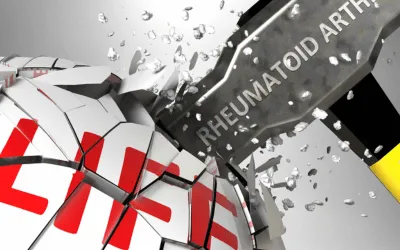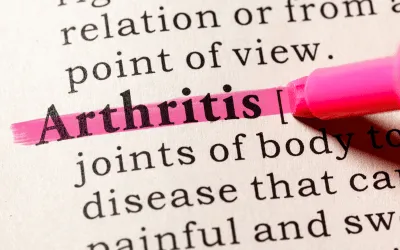About Arthritis
As the nation’s #1 cause of disability, arthritis affects nearly 60 million adults and 300,000 children. Over 100 types of arthritis and related conditions damage the joints and often other organs.
How can we assist you?
Helpful Tools for You

Understanding the 100+ Different Types of Arthritis and Their Specific Treatments: A Complete Guide for Older Adults
You're Not Alone in This Journey
If you're reading this because you or someone you love has been dealing with joint pain, stiffness, or has recently been diagnosed with arthritis, take a deep breath. You're joining a community of nearly 60 million American adults who live with arthritis every day. While that might sound overwhelming, here's the encouraging news: we know more about arthritis and how to treat it than ever before.
Many people think arthritis is just "getting old" or "wear and tear" – but that's only part of the story. There are actually more than 100 different types of arthritis, each with its own causes, symptoms, and most importantly, treatments that can help you feel better and stay active.
The Most Important Thing to Know Right Now
Arthritis is not one single disease. It's like saying "heart disease" – there are many different types, and knowing which type you have makes all the difference in getting the right treatment. Arthritis includes more than 100 conditions that affect the joints, tissues around the joint, and other connective tissues.
Think of this guide as your roadmap to understanding what's happening in your body and what you can do about it.
The "Big Six" Types of Arthritis Most Older Adults Should Know About
While there are over 100 types, let's start with the six most common ones that affect older adults:
1. Osteoarthritis (OA) – The "Wear and Tear" Type
What it is: More than 32.5 million Americans have osteoarthritis. This happens when the cartilage (your body's natural shock absorber) in your joints gradually wears down over time.
Why it happens:
Natural aging process
Previous joint injuries
Being overweight (puts extra pressure on joints)
Repetitive use of certain joints
Most common locations: Knees, hips, hands, and spine
What it feels like:
Joint pain that gets worse with activity
Stiffness, especially in the morning (usually less than 30 minutes)
Joint may feel "creaky" or make noise
Loss of flexibility
2024 Treatment Breakthroughs: Recent research from the University of Leeds shows promising results with methotrexate for osteoarthritis pain relief, offering new hope for millions suffering with chronic pain and stiffness.
What helps:
Regular, gentle exercise (swimming, walking, tai chi)
Weight management
Physical therapy
Heat and cold therapy
Over-the-counter pain relievers (used carefully)
Joint replacement surgery for severe cases
2. Rheumatoid Arthritis (RA) – When Your Immune System Gets Confused
What it is: Rheumatoid arthritis affects more than 1.3 million Americans, with about 75% being women. This is an autoimmune disease where your body's defense system accidentally attacks your own joints.
Why it happens: Some experts believe the immune system becomes "confused" after an infection with bacteria or virus and starts to attack your joints.
What makes it different from osteoarthritis:
It typically causes the most stiffness in the morning
Often affects the same joints on both sides of your body
Can cause fatigue, low-grade fever, and loss of appetite
May affect other organs like eyes and skin
Latest Treatment Advances for 2024: New research at ACR Convergence 2024 shows promising results with vagus nerve stimulation devices and AI-driven blood tests to predict treatment response.
Modern treatments that work:
Disease-modifying antirheumatic drugs (DMARDs)
Biologic medications
Triple therapy combining methotrexate, sulfasalazine, and hydroxychloroquine shows enhanced symptom management
Physical therapy and exercise
Stress management techniques
3. Psoriatic Arthritis (PsA) – More Than Just Skin Deep
What it is: This affects people who have psoriasis (a skin condition) and causes joint inflammation.
What to look for:
Pink-colored fingers that appear sausage-like, and pitting of the fingernails
Joint pain and stiffness
Skin patches that are red, scaly, and itchy
2024 Innovation: New dual-target biologics that simultaneously inhibit IL-17 and IL-23 inflammatory pathways are showing promising results. TYK2 inhibitors offer oral alternatives with fewer side effects.
4. Gout – The Crystal Clear Problem
What it is: Gout is the most common inflammatory arthritis in the United States, affecting more than 8 million individuals with a prevalence of 3.9%.
What happens: Sharp uric acid crystals form in your joints, causing sudden, severe pain.
Most common target: Big toe (though it can affect other joints)
What it feels like:
Sudden, intense pain (often at night)
Joint becomes red, hot, and extremely tender
Pain usually peaks within 12-24 hours
Good news: Gout is very treatable once properly diagnosed.
5. Fibromyalgia – The Widespread Pain Condition
What it is: A long-lasting disorder that causes widespread pain and tenderness throughout the whole body or in multiple places.
Important to know: Fibromyalgia doesn't damage the joints or muscles, but the pain is very real.
What helps:
Gentle exercise
Stress management
Good sleep habits
Certain medications for nerve pain
6. Ankylosing Spondylitis – The Spine Specialist
What it is: Axial spondyloarthritis affects an estimated 2.7 million people and primarily affects the spine.
What it feels like:
Lower back pain and stiffness
Pain that's worse in the morning and improves with movement
May spread to other joints over time
Game-Changing Treatment Advances in 2024-2025
The world of arthritis treatment is moving fast, and there's genuine reason for hope:
Breakthrough #1: Personalized Medicine
Genetic profiling and biomarkers are now being used to tailor therapies to individual patients, enhancing effectiveness while minimizing side effects.
Breakthrough #2: The Gut-Joint Connection
Changes in the gut microbiome before rheumatoid arthritis develops could provide a window of opportunity for preventative treatments. Probiotics, prebiotics, and even fecal microbiota transplants are being explored as potential treatments.
Breakthrough #3: Regenerative Medicine
Stem cell therapy, including stem cell-derived exosome therapy and mesenchymal stem cell therapy, is showing incredible potential for joint repair and regeneration.
Breakthrough #4: Artificial Intelligence
AI-driven analysis systems are now being used to grade joint inflammation and predict treatment response using only blood tests, making diagnosis and treatment selection more precise than ever.
What This Means for Your Daily Life
The Reality Check
According to the Centers for Disease Control and Prevention, more than one-third of adults with arthritis report that it limits their leisure activities and work, and 25% say it causes severe pain.
The Hope
But here's what's encouraging: With recent advancements in therapy, the prognosis of rheumatoid arthritis has improved significantly, and similar progress is being made across all types of arthritis.
Your Action Plan: What to Do Next
Step 1: Get the Right Diagnosis
Don't assume all joint pain is the same
Ask your doctor specifically which type of arthritis you have
Early diagnosis and a tailored treatment plan are essential for managing arthritis effectively
Step 2: Build Your Treatment Team
Primary care physician
Rheumatologist (for inflammatory types)
Physical therapist
Possibly a pain management specialist
Step 3: Stay Informed About New Treatments
Treatment options are expanding rapidly
New medications for arthritis, including DMARDs, biologic drugs, and NSAIDs, have revolutionized treatment by targeting inflammation and offering personalized pain management
Don't give up if the first treatment doesn't work – there are many options
Step 4: Focus on What You Can Control
Lifestyle factors that can help:
Regular, appropriate exercise
Maintaining a healthy weight
Anti-inflammatory diet has significantly improved quality of life for those with arthritis
Stress management
Getting quality sleep
Not smoking
The Bottom Line: There Is Hope
As well as investing in research, Versus Arthritis campaigns on behalf of the 10 million people in the UK with arthritis to bring down waiting times and increase funding for musculoskeletal research. Similar efforts are happening worldwide.
Remember:
You're not alone – millions of people live full, active lives with arthritis
Treatment options are better than ever and improving rapidly
With recent advancements in therapy, the prognosis has improved significantly
Early treatment can prevent or slow joint damage
Many people find significant relief with the right combination of treatments
One Last Thought
Arthritis might be part of your story, but it doesn't have to be the whole story. With the right knowledge, treatment team, and approach, you can continue to live the life you want. The key is taking that first step to understand what type of arthritis you're dealing with and working with your healthcare team to find the treatment approach that works best for you.
If you're experiencing joint pain, stiffness, or other symptoms that might be arthritis, don't wait. The sooner you get an accurate diagnosis and appropriate treatment, the better your outcomes are likely to be.

Effects of Arthritis

Cause of Disability
In the United States, 23% of all adults, or more than 54 million people, have arthritis. It is a leading cause of work disability, with annual costs for medical care and lost earnings of $303.5 billion.

Workforce Effects
Sixty percent of US adults with arthritis are of working age (18 to 64 years). Arthritis can limit the type of work they are able to do or keep them from working at all.

Global Impact
In fact, 8 million working-age adults report that their ability to work is limited because of their arthritis. For example, they may have a hard time climbing stairs or walking from a parking deck to their workplace.
Promoting Interventions That Reduce Arthritis Pain
American Arthritis Foundation recognizes several proven approaches to reduce arthritis symptoms:
Be active. Physical activity—such as walking, bicycling, and swimming—decreases arthritis pain and improves function, mood, and quality of life. Adults with arthritis should move more and sit less throughout the day. Getting at least 150 minutes of moderate-intensity physical activity each week is recommended.
Protect your joints. People can help prevent osteoarthritis by avoiding activities that are more likely to cause joint injuries.
Talk with a doctor. Recommendations from health care providers can motivate people to be physically active and join a self-management education program. Should your arthritis be interfering with your activities of daily living you may be a candidate to receive many new treatments, and learn how to reverse the arthritis condition.


